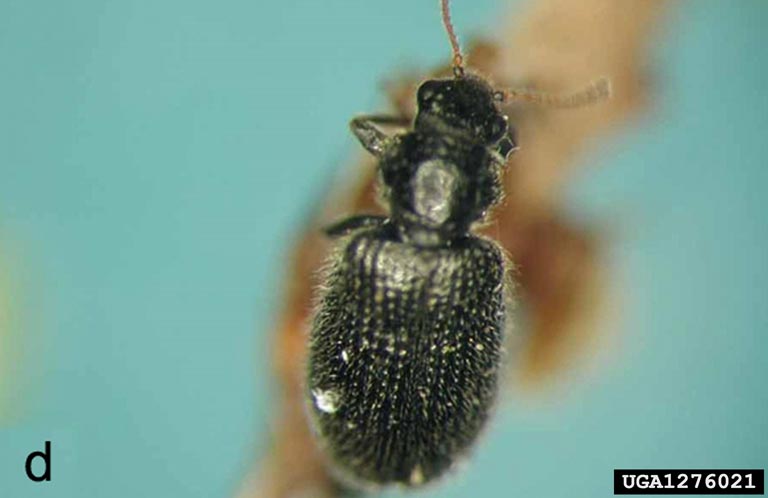World News
Fight to save Southeast Hemlocks takes new tack
RICHMOND, Va. (AP) — A beetle the size of a single grain of rice is the latest best hope for hemlocks in the Southeast that have been felled by the millions by an invasive bug.
The beetle eats only one thing: the hemlock woolly adelgid (uh-DEL-jid), and it does so voraciously.
Researchers are hopeful this new beetle will be a worthy adversary, based on releases of the beetles at sites in Virginia and West Virginia. Like the adelgid, the beetle is native to Japan, and they’re adapting to their new surroundings.
The introduction of the beetle is the latest tack to save the hemlock, a daunting task amid fears the evergreen could be facing the same fate as the American chestnut, which was virtually wiped out by a blight.
“We’re heading down a path that doesn’t look promising for the tree,” said James “Rusty” Rhea, an entomologist with the U.S. Forest Service in Asheville, N.C. “If it goes unchecked, we’re going to see some catastrophic mortality similar to what we had with the chestnut in the 20s and the 30s and the 40s.”
The adelgid has left a terrible path of destruction in forests along the Eastern Seaboard since it was first identified in Virginia in 1951. Its impact has been less severe among interior sections of the Northeast, where long, cold winters keep the pest in check, but it has devastated hemlock stands in Virginia, the Carolinas, Georgia and Tennessee.
The bug has wiped out 90 percent of the hemlocks in Virginia’s Shenandoah National Park and has taken a big bite out of stands in the Great Smoky Mountains. Approximately three-quarters of the hemlocks are infested on the East Coast, while the Southeast has seen nearly half of its hemlocks wiped out.
For the woolly adelgid, it’s been an all-you-can-eat buffet. The bug eats only hemlocks and it has no native predators.
To combat them, researchers first brought in a beetle from the Pacific Northwest, known by the scientific name of Laricobius nigrinus.
“From an anecdotal standpoint, it’s been very encouraging,” Scott Salom, an entomologist in the College of Agriculture and Life Sciences at Virginia Tech, said of the beetle. “All the managers out there are excited about it.”
While effective, the latest anti-adelgid beetle has been more aggressive, with an appetite to match. Its scientific name is Laricobius osakensis.
The adelgid literally sucks the life out of hemlocks. Once hatched, they attack the tender shoot of a hemlock’s new growth, inserting a filament-like appendage into the base of the needle to feed on cells and wood tissue.
The infestation eventually turns a robust evergreen into what Rhea described as a gray ghost. The ravages of can be seen in the dull, shadowy profiles of hemlocks forests in the Southeast.
While the adelgid was discovered a little more than 60 years ago on the East Coast, it probably had taken up residence in hemlocks decades earlier. They likely hitched a ride on ornamental hemlocks shipped from Japan.
The introduction of this new, improved beetle to combat the bug illustrates the challenge of combatting an invasive species.
While chemical treatments can be used against the infestation, it is considered too labor intensive and expensive. It also raises environmental concerns.
So-called biological controls – using a nonnative predator to kill the invasive pest – also are a time-consuming endeavor.
The perfect match must be made, federal permission is required to bring in a nonnative bug, then it must be quarantined before it can be released to ensure it doesn’t introduce a new set of problems. They also must be bred to effective numbers to fight the pest, and introduced to infested hemlock forests.
Reproduction was the problem with the first beetle, the Laricobius nigrinus.
“It’s a numbers game,” Salom said. “We can’t produce the numbers we like because they’re very hard insect to rear.”
While excited by the new beetle, scientists say managing the hemlock-eating pest will likely take a multipronged approach, including chemicals.
Scientists are intent on combatting the adelgids because hemlocks are important ecologically. While hemlocks are cut and milled in New England for siding, in the South they are primarily valued for their ecological role.
Their shade cools streams to a temperature that sustains native trout and they provide shelter for birds that migrate north to nest, such as warblers.
The adelgid has also taken its toll on history.
It killed the old-growth hemlocks at Rapidan Camp that stood when President Herbert Hoover sought relief from Washington’s heat during the summer months in the Virginia woods. The hemlocks cooled the waters where Hoover fished for trout.
Rhea is cautious when he assesses the latest tack in the fight against the hemlock’s killer, not venturing a guess on how many can be saved. But the alternative isn’t an option.
“If there’s no intervention, they don’t survive very well at all,” he said. “We’ve still lost a lot of hemlocks.”






















